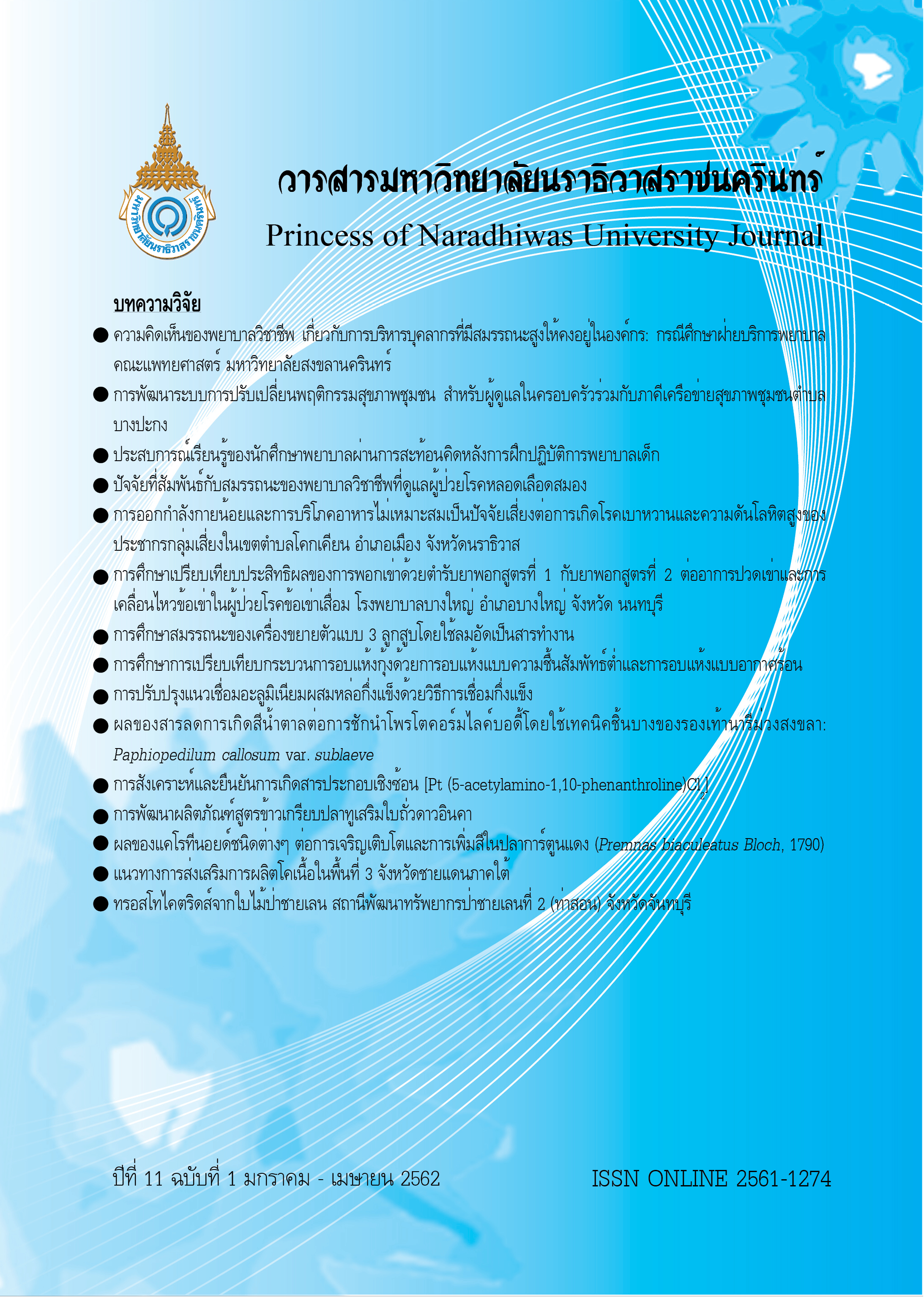Effects of different carotenoids on growth and pigmentation of Spine-cheek anemonefish (Premnas biaculeatus Bloch, 1790)
Keywords:
Spine-cheek anemonefish, Carotenoid, Growth, PigmentationAbstract
This study aimed to examine the effects of dietary supplementation with various synthetic carotenoid type in spine-cheek anemone fish. A 6x3 factorial experiment was conducted to determine two factors. First factor was 5 different carotenoid types: carotene, canthaxanthin, astaxanthin, lutein, and zeaxanthin. A non-carotenoid supplemented diet was assigned as control. Second factor was supplementation time, which consisted in 1, 2 and 3 months of diet time. Fish diet contained each 100 mg/kg of carotenoid with 3 replications, to satiation, twice a day. Experiment was carried out for 3 months, in which growth and skin color were evaluated monthly. Results revealed the following. Non-significant differences were observed in: a) average daily gain, b) specific growth rate, c) survival rate, and d) feed conversion ratio between fish fed with non-carotenoid supplemented diet and fish fed with each carotenoid (p>0.05). However, brightness (L*), redness (a*), yellowness (b*), total carotenoid, type and content of carotenoid accumulated in fish skin were significantly affected (p<0.05). Skin of fish fed with supplemented astaxanthin diet showed the highest redness and total carotenoids. Meanwhile, dietary supplementation with lutein and zeaxanthin increased yellowness values. Types and contents of carotenoid accumulated in fish skin were related to type of carotenoid supplement in diet.
Values in supplementation time had shown significantly lower specific growth rate, survival rate, and higher feed conversion ratio when supplemented time increased (p<0.05). Brightness also showed a
decreasing trend, but non-significant difference was observed between month 2 and 3 (p>0.05). Meanwhile,
redness, yellowness, total carotenoids, types and contents of carotenoid accumulated in fish skin showed
an increasing trend in time, but non-significant differences were observed between month 2 and 3 (p>0.05).
Synthetic astaxanthin was mostly an efficient carotenoid source for enhancing redness of spine-cheek
anemone fish skin in a 2-month supplementation period of time as it made redness of skin the highest.
References
APHA, AWWA & WPCF. (1985). Standard Methods for the Examination of Water and Wastewater. (16th ed.). Washington, D.C.: American Public Health Association.
Association of Official Analytical Chemists (AOAC). (2005). Animal feed. In: Horwitz, W.(Ed.), Official Methods of Analysis of AOAC International, (18th ed.) AOAC International, Maryland, 1-48.
Boonyaratpalin, M., Thongrod, S., Supamattaya, K., Britton, G. & Schlipalius, L. E. (2001). Effects of B-carotene
source, Dunaliella salina, and astaxanthin on pigmentation, growth, survival and health of Penaeus monodon. Aquaculture Research, 31, 182-190.
Britton, G., Liaaen-Jensen, S. & Pfander, H. (1995). Carotenoids Vol.1B. Spectroscopy. Birkhauser Verlag, 360.
Chatzifotis, S., Pavlidis, M., Jimeno, C., Vardanis, G., Sterioti A. & Divanach, P. (2005). The effect of different carotenoid sources on skin coloration of cultured red porgy (Pagrus pagrus). Aquaculture Research, 36, 1517–1525.
Choubert, G. & Luquet, P. (1983). Utilization of shrimp shell meal for rainbow trout (Salmo gairdneri Rich.)
pigmentation. Influence fat content of the diet. Aquaculture, 32, 19–26.
Christiansen, R. & Torrissen, O.J. (1996). Growth and survival of Atlantic salmon, Salmo salar L. fed different dietary levels of astaxanthin. Juveniles. Aquaculture Nutrition, 2, 55–62.
Doolan, B. J., Booth, M. A., Jones, P. L., & Allan, G. L. (2008). Effects of dietary astaxanthin concentration and feeding period on the skin pigmentation of Australian snapper (Pagrus auratus) (Bloch & Schneider, 1801). Aquaculture Research, 40, 60 – 68.
Fenner, B. (2005). Premnas biaculeatus - The Maroon Clownfish. SeaScope, Aquarium Systems, Inc., 22(1), 1-3.
Gomes, E., Dias, J., Silva, P., Valente, L., Empis, J., Gouveia, L., et al. (2002). Utilization of natural and synthetic
source of carotenoids in the skin pigmentation of gilthead seabeam (Sparus aurata). European Food Research and Technology, 214, 287-293.
Goodwin, T.W. (1951). Carotenoids in fish. New York: Chen. Publ. Co. Inc.
Ho, A. L. F. C., Shea, O. S. K. & Pomeroy, H. F. (2013). Dietary esterified astaxanthin effects on color, carotenoid
concentrations, and compositions of clown anemonefish, Amphiprion ocellaris, skin. Aquaculture International, 21, 361-374.
Hoar, W.S. & Randall, D. J. (1989). Fish Physiology III. New York: Academic Press.
Idahah, Y. & Jian, G. Q. (2010). Effect of Dietary Carotenoids on Skin Color and Pigments of False Clownfish,
Amphiprion ocellaris, Cuvier. World Aquaculture Society, 41, 308-318.
Kanokrung, A., Watanadilok, R., Muthuwan, V. & Santawanpas, S. (2013). Effects of dietary protein, lipid and astaxanthin levels on growth and carotenoid accumulation in anemone fish, (Amphiprion ocellaris). Journal of Science, Technology, and Humanities, 11(2), 95-103
Katayama, T., Shintani, K. & Chichester, C.O. (1973). The biosynthesis of astaxanthin. Comparative Biochemistry and Physiology, 448, 253 – 257.
Lakehi, A. B., Ahmadi, M. R., Safi, S., Ytrestoyl, T. & Bjerkeng, B. (2010). Growth performance, mortality and
carotenoid pigmentation of fry offspring as affected by dietary supplementation of astaxanthin to female rainbow trout (Oncorhynchus mykiss) broodstock. Applied Ichthyology, 26, 35–39.
Miki W. (1991). Biological functions and activities of animal carotenoids. Pure and Applied Chemistry, 63, 141-146.
Seyedi, S.M., Sharifpour, I., Ramin, M. & Jamili, S.H. (2013). Effect of Dietary Astaxanthin on Survival, Growth, Pigmentation Clownfish, Amphiprion ocellaris, Cuvier. Indian Journal of Fundamental and Applied Life Sciences, 3(3), 391-395.
Strickland, J. D. H. & Parsons, T. R. (1972). A Practical Handbook of Seawater Analysis. (2nd ed.). Ottawa: Fisheries Research Board of Canada.
Torrisen, O. J., Hardy, R. W. & Shearer, K. D. (1989). Pigmentation of salmonids-carotenoid deposition and metabolism. Reviews in Aquatic Science, 1, 209-225.
Yeum, K. J. & Russell, R. M. (2002). Carotenoid bioavailability and bioconversion. Annual Review of Nutrition, 22, 483-504.
Yi-Juan Wang, Yew-Hu Chien & Chih-Hung Pan. (2006). Effects of dietary supplementation of carotenoids on survival, growth, pigmentation, and antioxidant capacity of characins, Hyphessobrycon callistus. Aquaculture, 261, 641–648.
Yuangsoi, B., Jintasataporn, O., Tabthipwon, P. & Kamel, C. (2010). Utilization of Carotenoids in Fancy Carp (Cyprinus carpio): Astaxanthin, Lutein and ß-carotene. World Applied Sciences, 11(5), 590-598.




